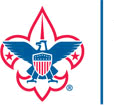Orienteering
Orienteering: Navigating the Outdoors
Orienteering is an exciting and challenging outdoor activity that combines map reading, navigation, and physical fitness. Scouts use their map and compass skills to find designated checkpoints, or “controls,” across unfamiliar terrain. The goal is to complete the course as quickly as possible while staying on track. Orienteering helps Scouts develop problem-solving skills, quick thinking, and confidence in their ability to navigate the natural world.
What is Orienteering?
Orienteering is often described as a “cross-country navigation” race where participants use a detailed map and compass to navigate between checkpoints in a specific order. Each checkpoint is marked on a map, and the goal is to find them in sequence while choosing the fastest or most efficient route. It’s a mental and physical challenge, making it a fun and engaging activity for Scouts.
_Suggested Pictures:
- A group of Scouts starting an orienteering course with maps in hand
- A close-up of an orienteering map with marked checkpoints_
Youtube Video: “What is Orienteering? A Beginner’s Guide for Scouts”
Reading an Orienteering Map
Orienteering maps are specially designed to provide detailed information about the terrain, trails, and obstacles. Unlike regular topographic maps, orienteering maps use specific symbols and colors to show land features such as open ground, dense forest, cliffs, and water bodies. Scouts learn to read these maps to navigate effectively through various terrains.
_Suggested Pictures:
- An orienteering map showing terrain features and checkpoints
- A Scout closely studying an orienteering map before starting the course_
Youtube Video: “How to Read an Orienteering Map: Symbols and Features”
Using a Compass
A compass is a key tool in orienteering. Scouts are trained to take bearings, align the map with the compass, and stay on course while navigating the terrain. The compass helps direct them to the next checkpoint, even if the trail is not visible. Learning to use the compass alongside the map is a vital skill for success in orienteering.
_Suggested Pictures:
- A Scout using a compass while navigating an orienteering course
- A close-up of a compass being aligned with an orienteering map_
Youtube Video: “Compass Basics: How to Navigate in Orienteering”
Planning Your Route
In orienteering, choosing the best route is a critical decision. While the map gives the location of checkpoints, it’s up to the participant to determine the fastest or easiest path between them. Scouts consider factors like elevation, obstacles (such as rivers or dense forests), and distance to decide the best route. This decision-making process encourages critical thinking and problem-solving.
_Suggested Pictures:
- A Scout planning their route between checkpoints on an orienteering map
- A scenic trail or challenging terrain in an orienteering course_
Youtube Video: “How to Plan Your Route in Orienteering”
Checkpoints and Control Markers
Checkpoints are marked on the map, and when Scouts reach them, they must find the control marker at each location. Control markers are usually bright flags or signs, sometimes with numbers or codes, and may be located in hard-to-see spots like behind trees or in small clearings. Scouts learn to identify these markers and record their progress at each checkpoint.
_Suggested Pictures:
- A Scout reaching a control marker during an orienteering course
- A control marker (orange and white flag) placed in a forest or open field_
Youtube Video: “Finding Checkpoints in Orienteering: Tips for Scouts”
Time Management in Orienteering
Since orienteering is often a timed event, managing your time effectively is key to completing the course quickly. Scouts learn to balance speed with accuracy, making sure they don’t rush too quickly and miss important landmarks. Setting a pace and understanding how to estimate time between checkpoints is part of mastering orienteering.
_Suggested Pictures:
- A Scout checking their watch while navigating between checkpoints
- Scouts running through the forest, balancing speed and navigation_
Youtube Video: “Time Management Tips for Orienteering Races”
Safety Tips for Orienteering
Safety is always a priority in orienteering. Scouts are taught to stay aware of their surroundings, avoid dangerous terrain, and always keep track of their location. Knowing when to stop and reassess the map and compass helps prevent getting lost. It’s also important to be prepared for unexpected weather conditions and carry necessary safety gear like a whistle, first aid kit, and extra water.
_Suggested Pictures:
- Scouts reviewing safety gear before starting an orienteering course
- A group of Scouts huddled together, discussing safety strategies_
Youtube Video: “Orienteering Safety: What Every Scout Should Know”
Orienteering Competitions
Many Scouts enjoy participating in orienteering competitions, where they test their navigation skills against others. Competitions are usually held in parks, forests, or other natural settings and can vary in difficulty. Completing a course successfully in a timed competition is a rewarding experience that builds confidence and camaraderie among Scouts.
_Suggested Pictures:
- A group of Scouts at the starting line of an orienteering competition
- A Scout crossing the finish line after completing an orienteering race_
Youtube Video: “Orienteering Competitions: Tips and Tricks for Scouts”
Orienteering is a fun and challenging way to put navigation skills to the test while enjoying the outdoors. Scouts learn valuable life skills like map reading, decision making, and problem-solving, all while exploring new environments. Ready to get started? Check out the videos and resources above to sharpen your orienteering skills!


